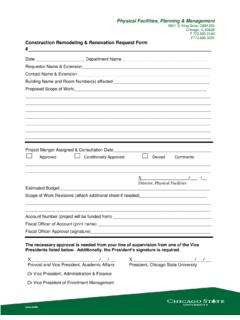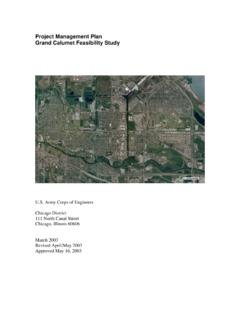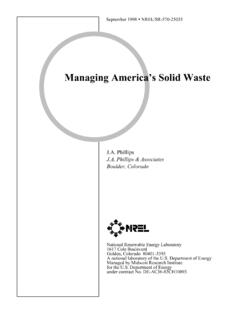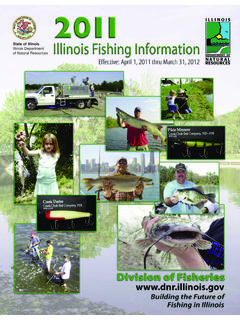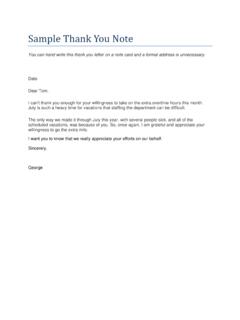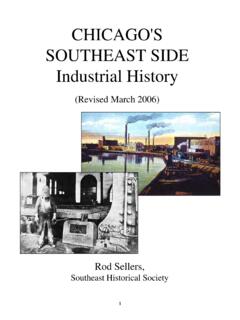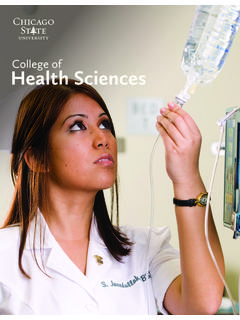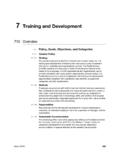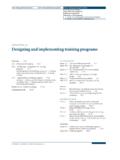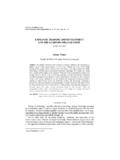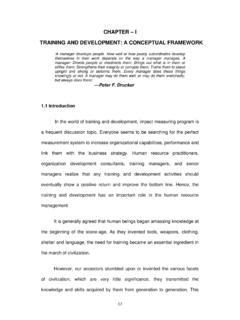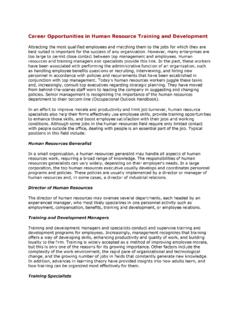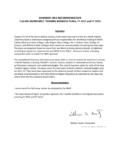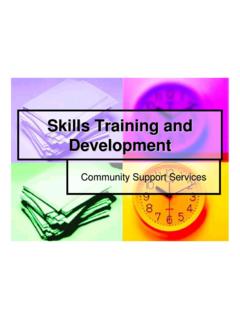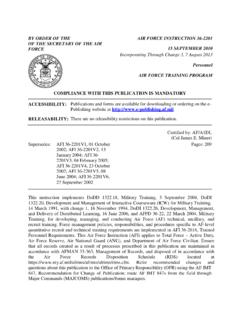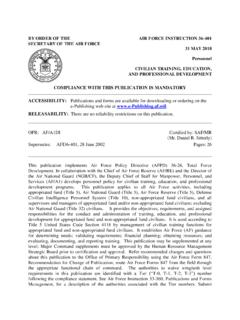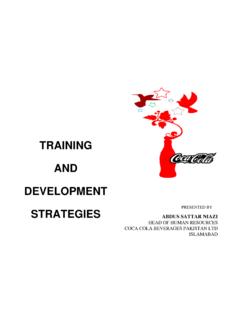Transcription of Train-the-Trainer Manual - Chicago State University
1 Train-the-Trainer Manual : Mentoring Adult Learners Textbooks/Teaching and Learning Materials Program-Ghana Chicago State University and Ghana Education Services-Curriculum Research development Division Funded by United States Agency for International development Prepared by Jean C. Murphy, Ed. D. and Carol O. Carson-Warner, Ed. D. Chicago State University , Chicago , IL. 1. TABLE OF CONTENTS. Foreword 3. Acknowledgements 4. Introduction 5. Adult Learning Principles 8. Preparing for the training 9. Establishing Confidence 11. Setting the Tone 14. Facilitating Discussion 17. Evaluation 20. Trainer as Field-Based Supervisor 21. Reflective Supervision 21. Appendices 23. About the Authors 28. 2. FOREWORD. The professional development of classroom teachers is a primary goal of Ghana Education Service (GES), USAID, and Chicago State University (CSU), partners in the Teaching Learning Materials Program (TLMP). Each member of the partnership believes that well trained education professionals such as trainers are an essential element of achieving good learning outcomes for Ghana's children.
2 Ghana's millennium vision for the future included the education of all its children, including the KGI and KGII population. Parents eagerly embraced this vision by sending their children to school in great numbers. This in turn created a need for well informed, well prepared, and well-trained professionals. This Train-the-Trainer Manual addresses the need for professionally designed trainings that enhance, extend, and build the capacity of the GES to train a cadre of competent and well-trained mentor/trainers. The purpose of the Train-the-Trainer Manual is to provide mentor/trainers with competencies that will enable them to effectively mentor, facilitate knowledge acquisition, application, and skills in use of the TLMP Teacher's Guides and Children's Workbooks designed and created as instructional materials for use in KGI through P3 classrooms. As mentors you will work with a novice or beginning trainer in order to help them become successful.
3 More than likely, as a new mentor/trainer you will be assigned to teach others, and in this capacity you will serve in the role of a teacher, leader, guide, sponsor, and role model for others. Generally, the mentor/trainers work with the new trainer during his or her first year of training . 3. ACKNOWLEDGEMENTS. Chicago State University would like to acknowledge all partners in the effort to provide educational experiences to the children of Ghana. USAID-Washington, the Ghana Mission, and the Ghana Education Services/Curriculum Research development Division (GES/CRDD) have played significant roles in providing needed resources and resource persons. These resources have enabled a coordinated effort to create Teacher and Learning Materials (TLMs), to provide support for trainers, and to distribute the TLMs throughout the nation of Ghana. 4. INTRODUCTION. The Role of Trainers in Mentoring Adult Learners This Manual is designed to support the professional development of Mentor/Trainers working with future trainers throughout Ghana's public school system and the Ghana Education Service (GES).
4 The purpose of the Train-the-Trainer Manual is to provide mentor/trainers with competencies that will enable them to effectively mentor, facilitate knowledge acquisition, application, and skills in use of the TLMP Teacher's Guides and Children's Workbooks designed and created as instructional materials for use in KGI through P3 classrooms. Researchers (Ross-Gordon 2001) have found that trainers who prepare themselves for the training /mentoring role by participating in training of Trainers type workshops increase their potential to enhance the professional growth and development of classroom teachers, and increase learning outcomes for children as well. Findings from this same study also report that trainers of trainers (TOTs) experience growth in the following areas: Exposure to new and diverse perspectives as they work with classroom teachers, Improved coaching and listening skills, Increased satisfaction with work, Leadership skills, Professional involvements The TOTs must actively facilitate learning by applying what is known about how adults learn (andragogy) to enhance the trainer/trainee experience.
5 Knowledge of how to work with adult learners is essential to effective training . Thusly, its principles are embedded throughout this Manual . 5. TOTs must view themselves as facilitators of learning, and as resources as opposed to simple conveyors of knowledge and information. This perspective enables the trainer to assist trainees in thinking deeply about knowledge acquired about TLMP Teacher's Guides and Children's workbooks, and their appropriate application (when and how). And, in doing so the trainer must support a growth process that includes the following behaviors (Brookfield 1986): Establishing a climate conducive to learning. Using adult learning principles in planning how and what they will learn. Encouraging learners to formulate their own learning objectives. Encouraging learners to identify and utilize a variety of resources to accomplish their objectives. Assisting adult learners in evaluating their own learning.
6 Whether you formally or informally mentor adult learners, adequate preparation is essential. This Manual describes the TOTs's journey, provides signposts to navigate the four phases of the journey, and raises reflection questions to encourage more critically reflective training practice. The Mentoring Process The mentoring process involves knowledge acquisition, application, and reflective supervision. Mentoring is best described as a reciprocal and collaborative learning relationship between two or more individuals who share mutual responsibility and accountability for helping a mentee (novice trainer) work toward achieving clear and mutually defined learning goals. Successful mentoring rests on building and maintaining a relationship of trust. This means that in addition to the learning, the relationship is cultivated throughout the mentoring partnership. A number of these guidelines are taken from the Alameda County Public Health Department 6.
7 Mentoring Process and Adult Learning 1. Acquisition of Knowledge MENTORING PROCESS. Adult Learning Establish a trusting relationship 3. 2. Reflective Application Supervision _____. 7. ADULT LEARNING PRINCIPLES. Best mentoring practices is consistent with the principles of andragogy (how adults learn), as articulated by Knowles (1980): Adults learn best when they are involved in diagnosing, planning, implementing, and evaluating their own learning. The role of the trainer is to create and maintain a supportive climate that promotes conditions necessary for learning to take place. Adult learners have a need to be self-directing. Readiness for learning increases when there is a specific need to know. Life's reservoir of experience is a primary learning resource; the life experiences of others add enrichment to the learning process. Adult learners have an inherent need for immediacy of application. Adults respond best to learning when they are internally motivated to learn.
8 8. Preparing for the training : Acquisition of Knowledge Effective training requires knowledge of adulkt learning principles, subject matter content, practice and planning. This section offers tips on advance preparation activities. Advance Preparation and Instructional Delivery The most effective trainings are not accidental they are the result of the trainer spending hours familiarizing her/himself with early childhood education content knowledge, adult learning principles, and instructional materials such as the TLMP Teachers' Guides and Children's Workbooks. Take the time. The recommended preparation time is three hours for every hour of training . Learn the material. Be well acquainted with the material, and make your own notes, highlight portions that you want to focus on and stress. This will lend the impression that you are a competent and confident trainer. It will also facilitate effective instructional delivery, and will increase your ability to answer questions correctly that the adult learner might pose.
9 Use your own words. The training will be better received and more interesting for adult learners and you will be more confident if you know the important points well enough to be able to express them in your own unique style. 9. Incorporate experiential learning. Make connections between your own experiences as a former teacher and some of the main points. Make sure to also inquire about the classroom teacher's experiences. Personalizing information with your own anecdotes (stories) will assist in both stressing and expanding points. Remember, for the adult learner life experiences add enrichment to the learning process. And, it will enhance any handouts and/or power point presentations that you use. Reference Lesson Overview and Objectives. Be sure to incorporate unit overview and course objectives for each Teacher's Guide in your presentation (s) as they establish the framework and context for subject matter ( , Mathematics, Environmental Studies, Literacy).
10 Model and demonstrate at least two lesson plans from each TLMP Teacher's Guide. Be sure to provide enough materials so that adult learners can experience age appropriate curriculum instruction and delivery ( , hands-on learning, discovery learning, directs teaching-see Overview in Teachers' Guides). 10. Establishing Confidence Much of what is communicated during training is through the professional behavior of you, the TOT. A TOT is confident in both her/his words and her/his body language will be more effective in persuading the adult learner to trust and adopt the instructional materials ( , TLMP Teachers' Guides and Children's Workbooks), and suggested learning applications and approaches. This section covers two important ways to enhance your performance as a confident trainer. Demonstrating your Credibility Minimizing Your Stage Fright Demonstrating Your Credibility There are seven common steps you can take to ensure your adult students view you as a credible trainer of the TLMP Teachers' Guides and Children's Workbooks.
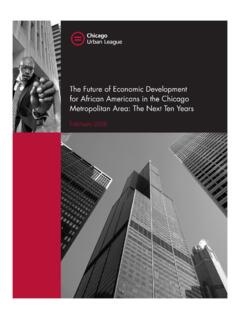
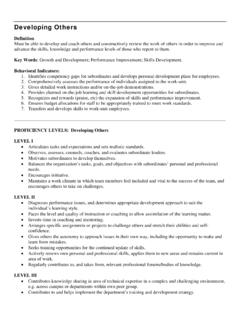
![Welcome [www.csu.edu]](/cache/preview/0/e/5/c/e/6/4/8/thumb-0e5ce64867fd8e84e02cdca7d89b0024.jpg)
